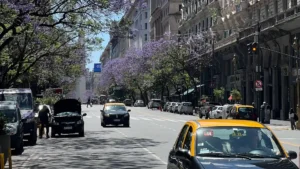
Dólar Blue Argentina 2025: Your Essential Traveler’s Guide to Exchange Rates, MEP, and Western Union
Dólar blue Argentina 2025 explained: learn how to get the best exchange rate with cash, credit cards (MEP), and Western Union. A traveler’s guide.
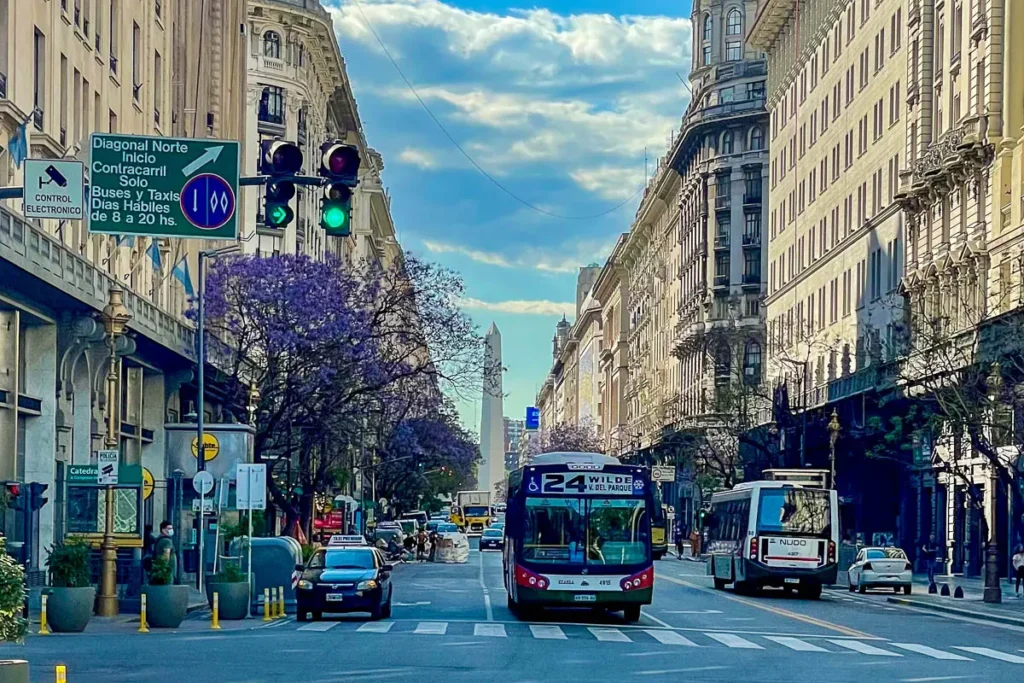
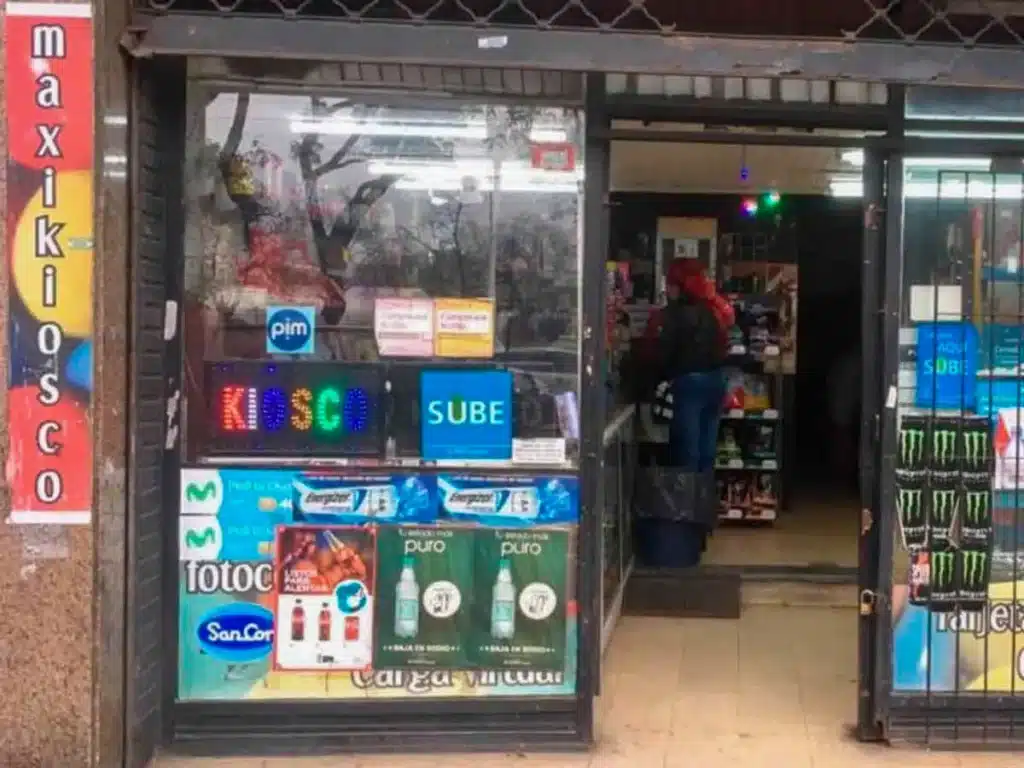
The SUBE card has long been the go-to tool for using public transport in Buenos Aires. And while it’s still a valid option, things have become a lot easier for travelers recently!
As of early 2025, it’s possible to pay for subway rides using a contactless credit or debit card—no need to buy or recharge a SUBE card. And since April 2025, the same system is available on city buses too. Just tap your card at the turnstile or on the reader when boarding the bus. That’s it.
While the SUBE card still works for all modes of transport—including trains—it’s becoming less essential. Getting one can be tricky these days (they’re not always easy to find), and you need to load credit in advance without knowing exactly how much you’ll use.
For most visitors, using a contactless card is the simplest and most practical way to get around the city.
If you’d still like to know more about the SUBE system, how it works, and where to get one, you can check out our full article here: SUBE CARD
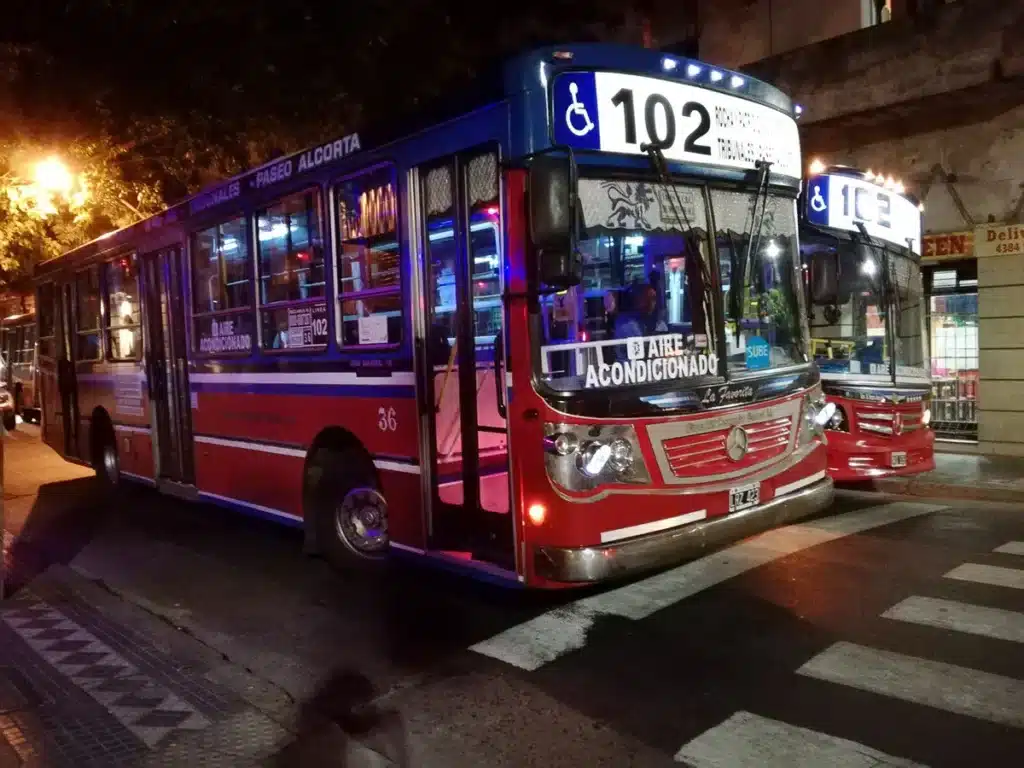
While Buenos Aires offers several options for public transportation, it’s essential to be aware that no system is perfect, especially when navigating the city center.
To ensure a comfortable journey, avoid peak hours when there’s no personal space, making it uncomfortable and stressful.
Additionally, be cautious of pickpockets. Especially during peak hours, but it’s better to remain vigilant at all times.
Keep your personal belongings secure and carry your backpack or bag in front of you. Moreover, avoid holding your phone when you’re near the doors, to prevent a potential theft.
These safety measures apply both on public transportation and while walking on the streets.
For route planning, Google Maps can be a reliable source of information, though the schedules may not always be accurate.
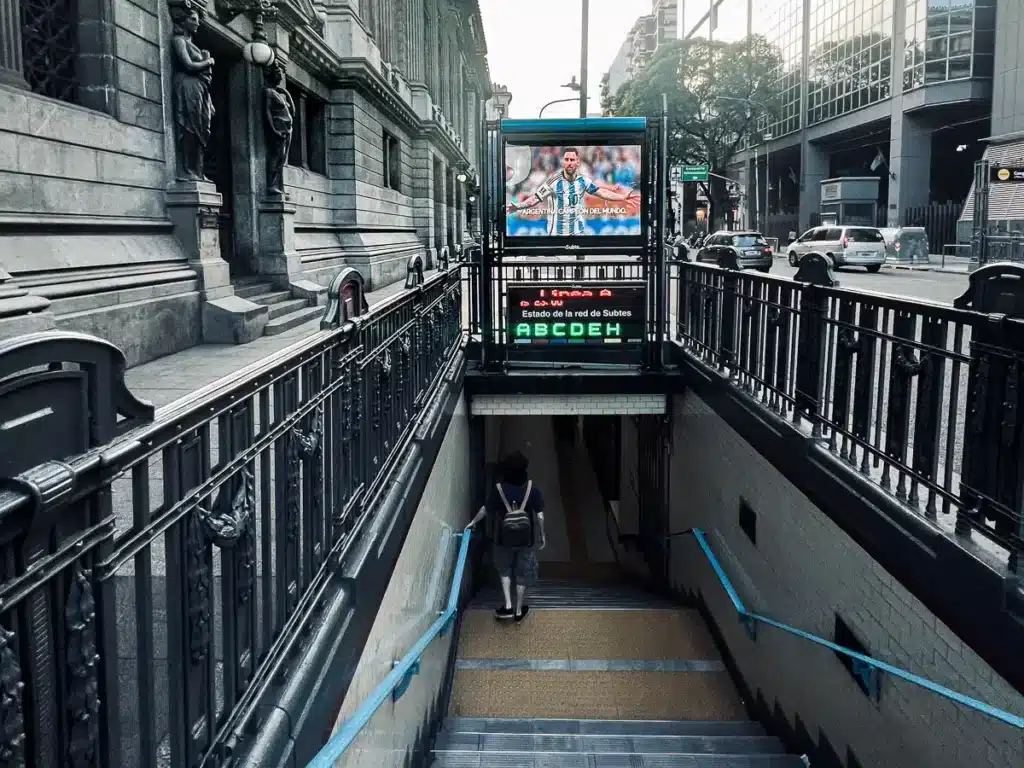
The Buenos Aires subway system, locally known as Subte, is the most convenient and cost-effective way to travel around the city.
It comprises six lines connecting various neighborhoods, efficiently navigating the central areas. Each line is identified by a letter and a specific color, making navigation relatively simple.
The Subte operates from 5:30 AM to around 10:30 PM on weekdays, with slightly later starting times on weekends and holidays. Line B offers extended night service on Fridays and Saturdays, running until 1:30 AM at selected stations—perfect if you’re out exploring the city after dark.
The subway is ideal for visiting key attractions in the city, except for La Boca.
Plaza de Mayo serves as the central hub for connections to various parts of the city, and you can easily walk to San Telmo and Puerto Madero from there. For trips to Palermo and Recoleta, the Subte is also a convenient option.
However, be cautious of potential strikes and avoid peak hours when it can get overcrowded.
We’ve included a handy table below showing the first and last departure times from each line’s terminal stations.
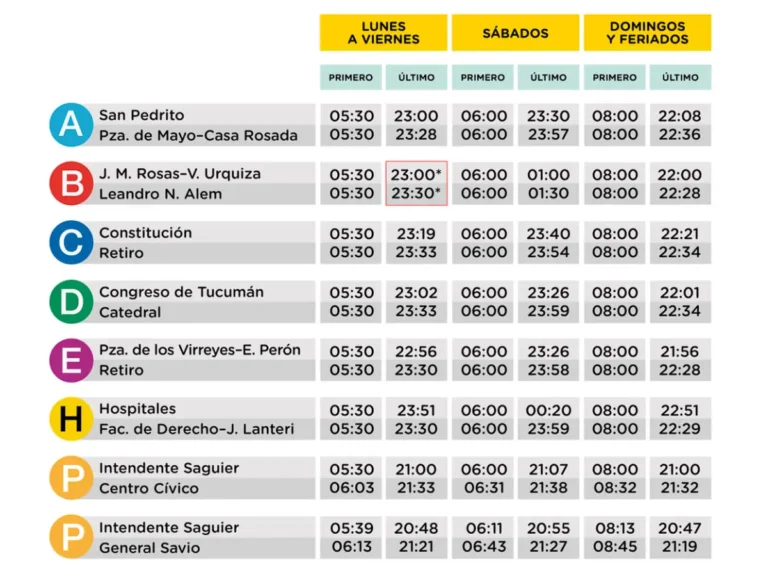

The extensive bus network, called Colectivo, is another popular mode of transportation in Buenos Aires, reaching almost every corner of the city.
Each bus line is designated by a number and color, with routes clearly displayed at bus stops. However, it may be overwhelming for first-time visitors.
Buses can be slower due to traffic, but they provide a great opportunity to immerse yourself in the city’s atmosphere and enjoy the sights.
Keep in mind that buses operate 24/7, but during the night (after 12 am), the frequency decreases, and you may need to wait for a long time.
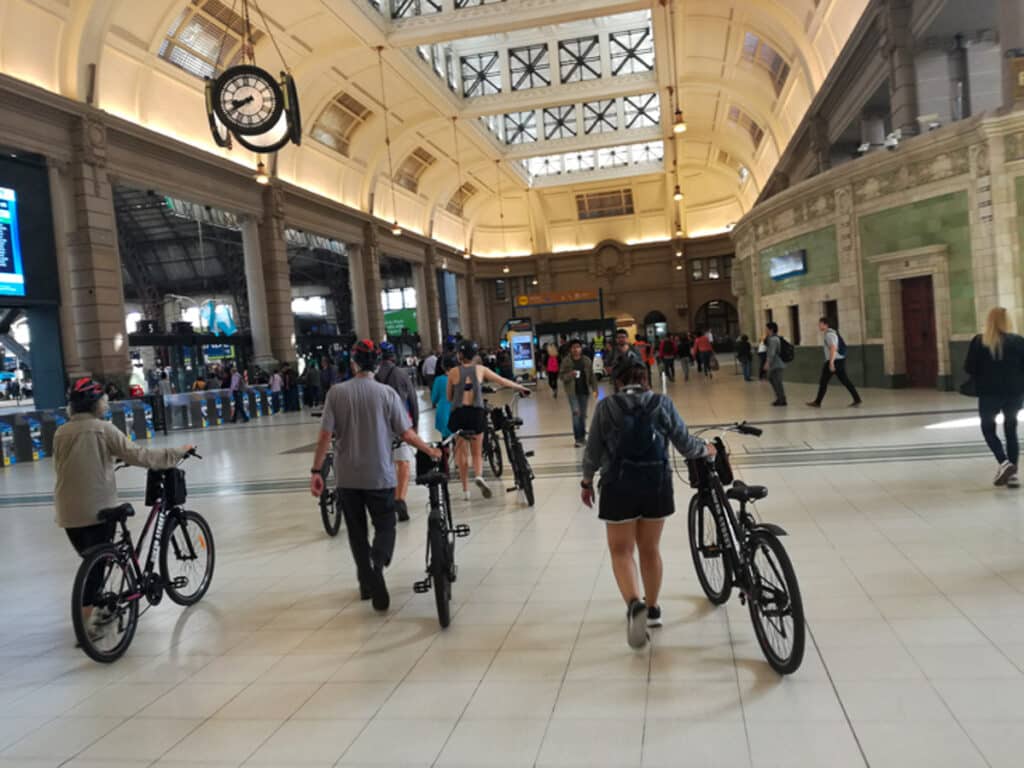
Often overlooked by tourists, trains are a convenient option for traveling to suburban areas and nearby cities.
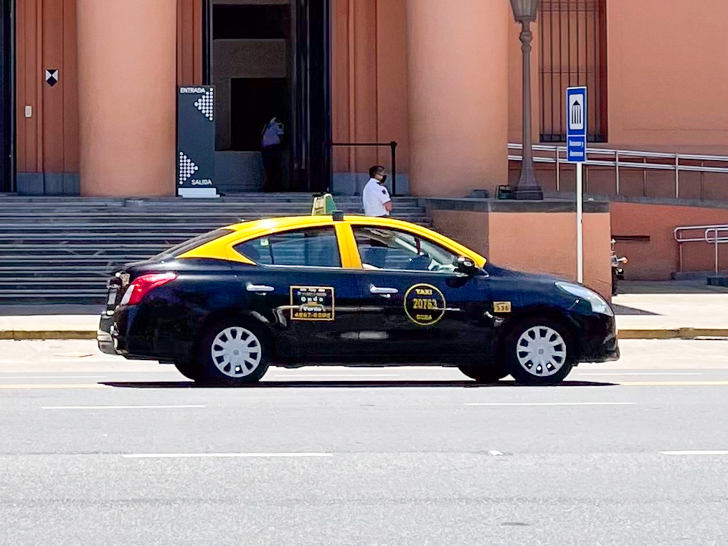
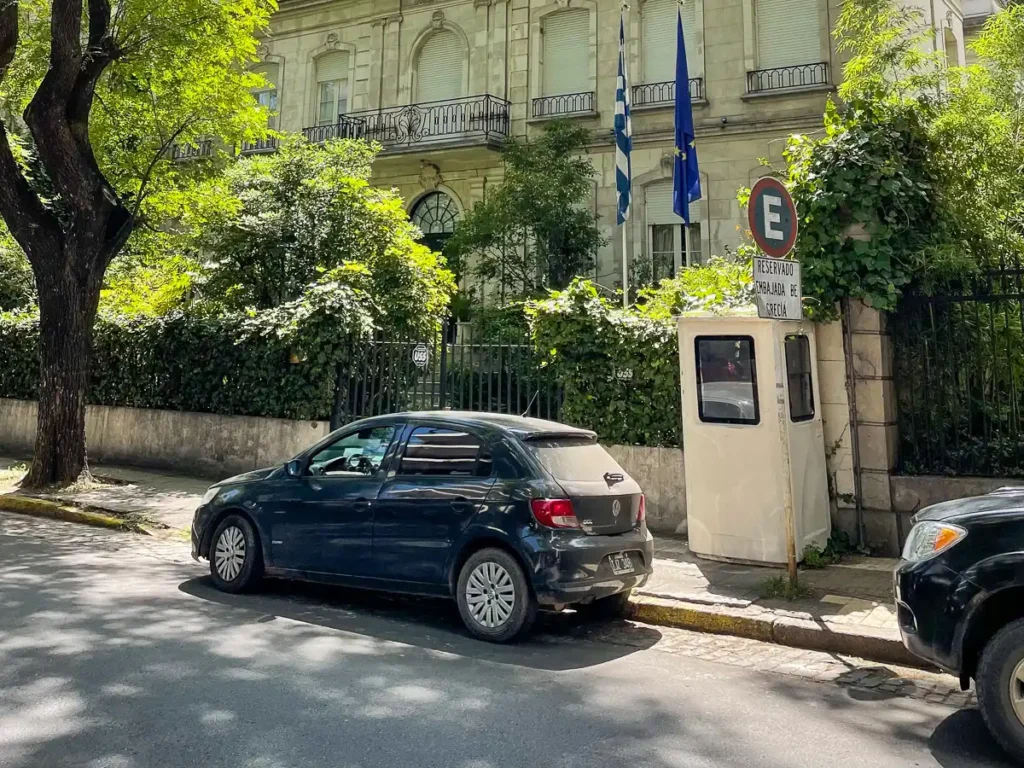
These ride-hailing apps offer convenient transportation with upfront pricing, a significant advantage.
However, they also have some disadvantages. For a comprehensive discussion on their benefits, potential challenges, and effective usage, please refer to our article linked here. CLICK HERE
Keep in mind that during peak hours and sometimes on rainy days, it could be almost impossible to get a ride due to high demand.
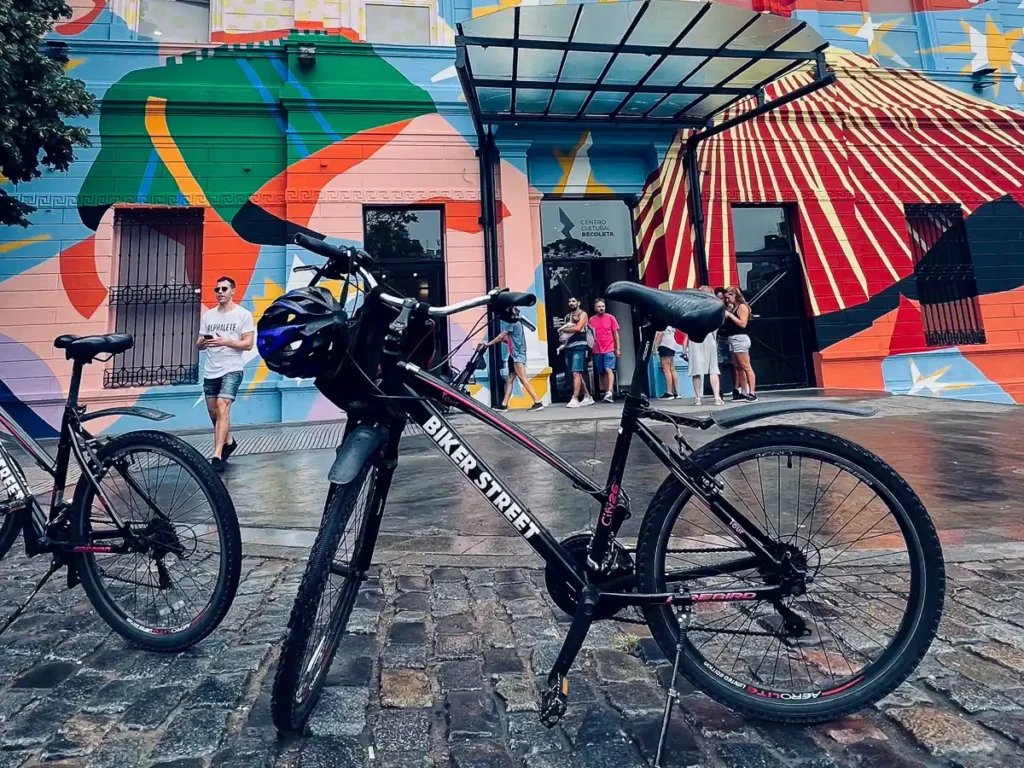
For those looking to explore Buenos Aires at a leisurely pace, cycling is an eco-friendly and enjoyable option.
With its extensive cycle lane network and flat terrain, Buenos Aires is one of the most bike-friendly cities in Latin America.
The city offers an extensive public bike-sharing system called Ecobici, allowing you to rent bikes for short trips. To get started, simply register online, find a station, pick up a bike, and start exploring the city.
However, bear in mind that government bikes might have maintenance issues, and it’s not uncommon to find broken bikes and bike stations that don’t work properly.
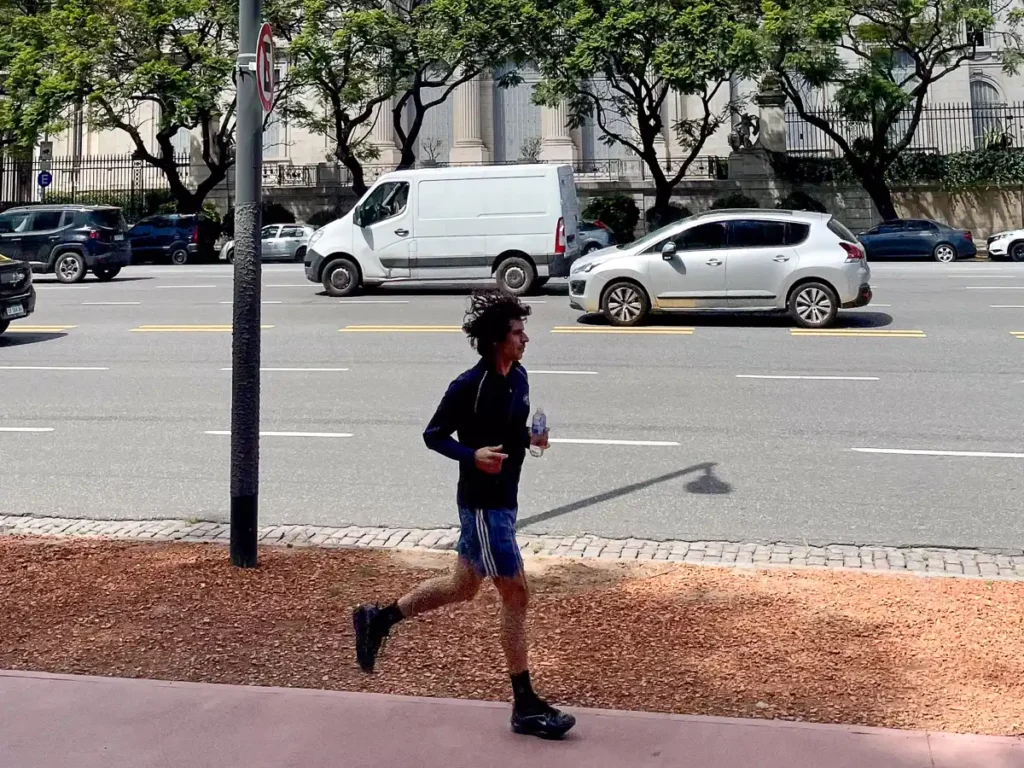
Buenos Aires is a city best experienced on foot, and it’s absolutely flat, making walking a piece of cake if you’re used to it.
All neighborhoods, such as Palermo, Recoleta, and San Telmo, are pedestrian-friendly and perfect for leisurely strolls.
Walking allows you to soak in the local culture, discover hidden gems, and appreciate the stunning architecture that defines the city’s charm.
However, be cautious at pedestrian crossings, as local drivers may adopt a more assertive driving style.
Expect drivers to prioritize boldness over caution at intersections, and some may not fully respect traffic lights, especially motorcyclists and cyclists. Always watch out when crossing the street.
Even though there are many map apps available to help you find a location, we can share some tips that may prove helpful when you’re running out of battery.
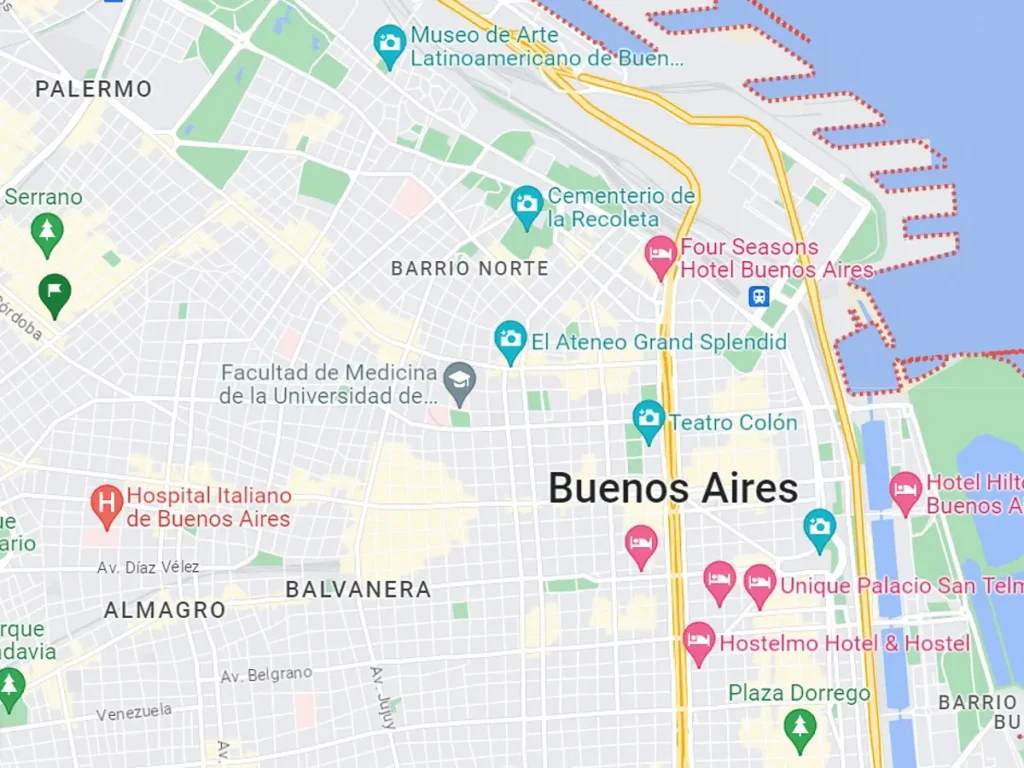
Buenos Aires is renowned for its well-organized street grid, which greatly simplifies navigation.
The city is divided into blocks known as “manzanas,” with each block enclosed by four streets, creating a square or rectangular area.
If you examine the city map, you’ll notice it resembles a checkerboard pattern. While not flawless, this arrangement establishes a clear structure that enhances ease of movement throughout the city.
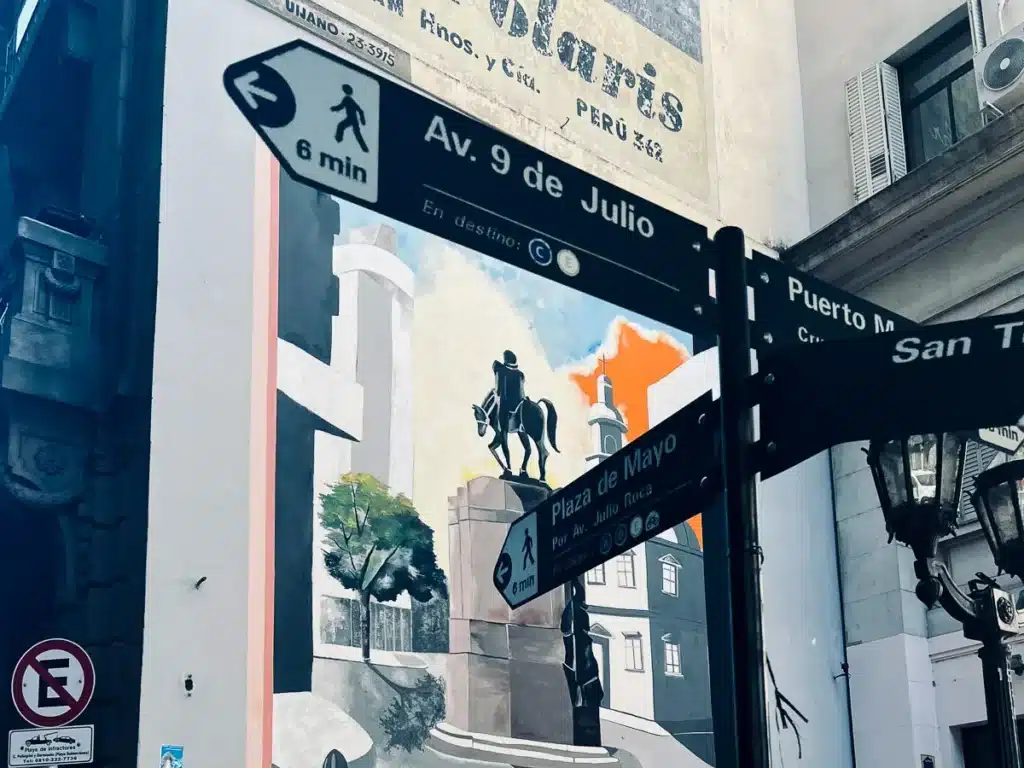
Addresses typically include both the street name and the street number, delivering a precise location within the city.
Buenos Aires employs a numerical system for its streets and avenues.
Streets that run from east to west generally experience increasing numbers as you move away from the city center.
Similarly, streets running from north to south (or vice versa) also adhere to a numerical progression.
Odd numbers will be on one side of the road, and even numbers on the other side.
Last but not least, parallel streets typically have similar numbers; that’s a good detail to bear in mind.
Each city block encompasses 100 numbers and measures 100 meters. This feature proves invaluable for establishing your location and estimating distances to your intended destination.
For instance, if you’re in route to our bike tour meeting point in the Palermo area, situated at 2269 Armenia St, and you find yourself at 1869 Armenia St, you’re aware that you’re just 4 blocks or 400 meters away from our meeting point.
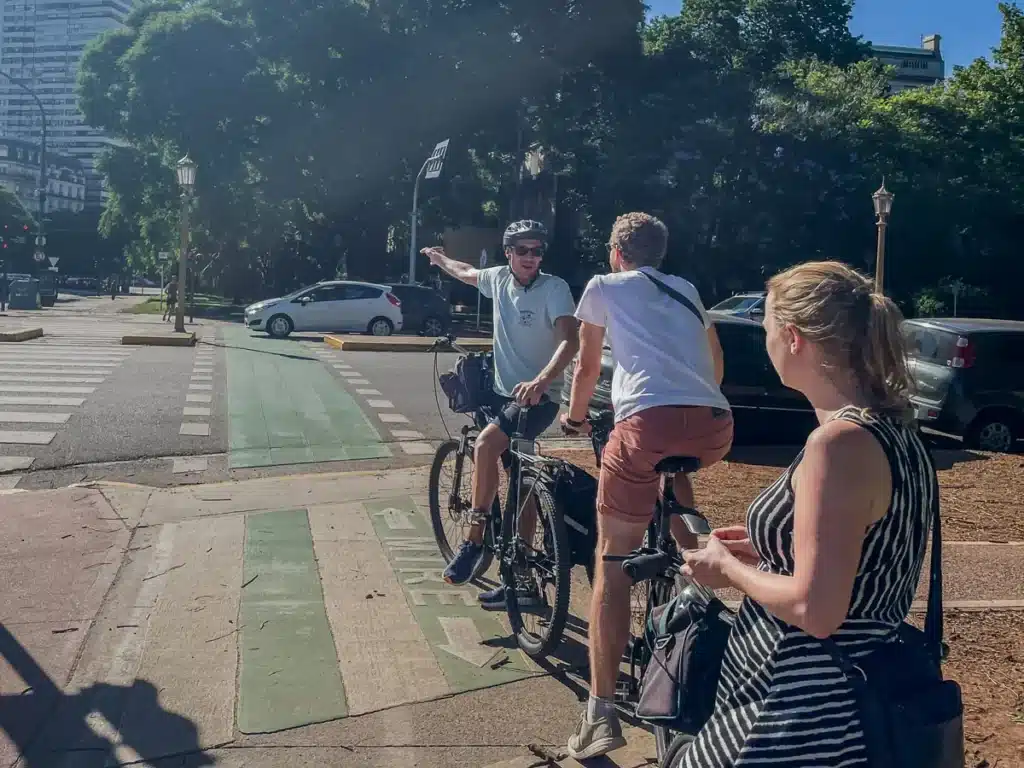
Should you find yourself uncertain about directions, do not hesitate to seek guidance from locals.
The Argentine people are known for their hospitality and are often more than willing to extend a helping hand to tourists.
In conclusion, Buenos Aires offers diverse transportation options, each with its unique set of experiences and challenges.
We recommend using the subway for its efficiency and reach, especially when heading to the city center, and considering Uber or Cabify for other areas. Exploring the city on foot or by bike is a wonderful way to immerse yourself in the local culture.
Whether you choose to bike with us at Biker Street or opt for public transit or ridesharing, we’re excited to welcome you to our vibrant city and make your stay an unforgettable adventure.

Dólar blue Argentina 2025 explained: learn how to get the best exchange rate with cash, credit cards (MEP), and Western Union. A traveler’s guide.
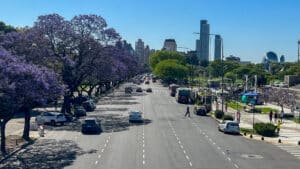
See Buenos Aires in bloom! From October to November, jacaranda trees cover the city with purple flowers, creating a magical spring scene.
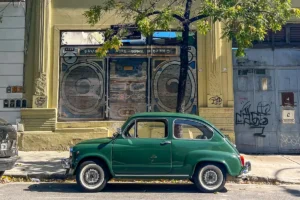
Go beyond the basics with bonus self-guided experiences in Buenos Aires. From tango & fútbol to day trips & markets, discover new ways to dive into local life.
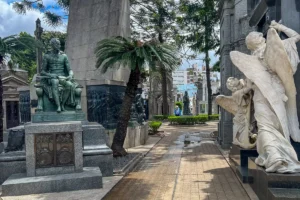
Stroll Recoleta and Palermo on this self-guided tour and see Belle Époque palaces, grand cafés, and elegant streets that earned Buenos Aires its nickname.

Explore Palermo’s green spaces on this self-guided tour. Visit parks, gardens, lakes, and relaxing spots where locals go to unwind and connect with nature.
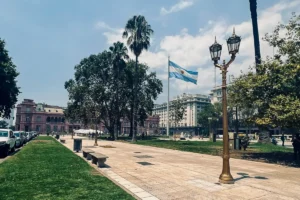
See Buenos Aires’ history come alive on this self-guided route through its civic icons, from the Obelisk to Congreso and the city’s most famous avenues.